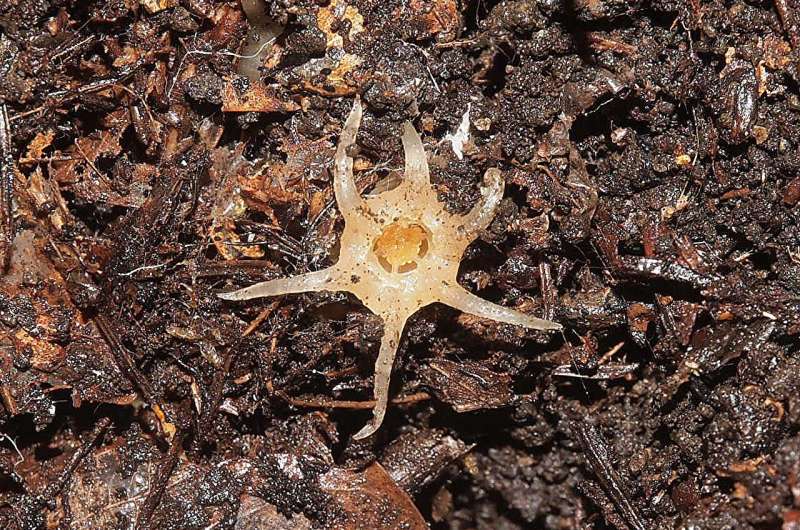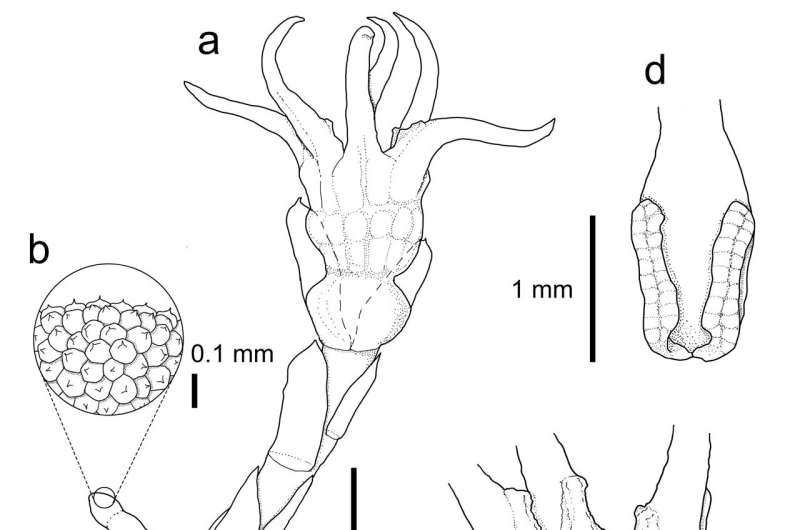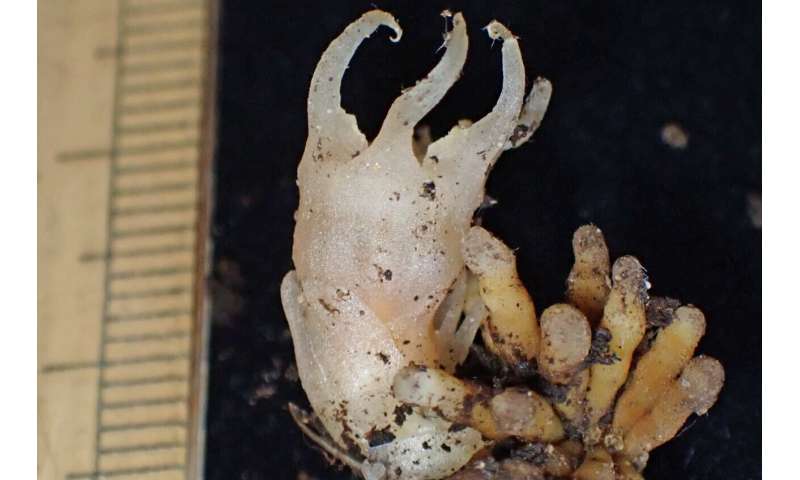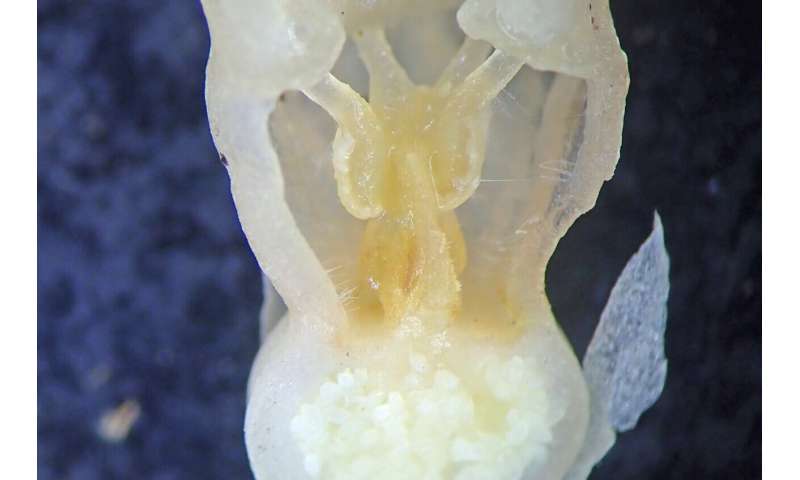This article has been reviewed according to Science X's editorial process and policies. Editors have highlighted the following attributes while ensuring the content's credibility:
fact-checked
trusted source
proofread
Researchers discover a new plant species whose name tells a story

A new species and genus of fairy lantern, tiny glass-like white plants that feed on fungi, has been discovered in Japan. In a country known for its extensive flora research, the discovery of a new plant genus is extremely rare and has not occurred in almost 100 years.
Fairy lanterns, or Thismiaceae as they are known to botany, are very unusual plants found mainly in tropical but also in subtropical and temperate regions. First of all, they are not green and do not engage in photosynthesis, but rather feed on fungal mycelia in the ground. As a consequence, they are often hidden under fallen leaves and only for a brief period produce above-ground flowers that look like glasswork.
The Japanese name for Thismia, one of the major groups within this family, is "Tanuki-no-shokudai," which means "raccoon dog's candleholder," and refers both to their shape and their underground lifestyle. However, they are also extremely rare and difficult to find.
"At present, approximately 100 species within the family have been identified, nearly half of which are known only from their first discovery, sometimes from a single specimen," explains Kobe University botanist Suetsugu Kenji, who is an internationally renowned expert on non-photosynthetic plants.
Suetsugu has long-standing collaborations with local botanists who have access to secluded areas all over Japan. He says, "The dedication of Japanese amateur researchers to revealing the hidden flora of these regions has been crucial in identifying species unknown to science."

Thus, when he was sent a specimen of a fairy lantern that a hobby botanist had found and that a local expert thought represented a new species of the genus of Tanuki-no-shokudai, he knew he had to investigate. However, it soon became clear "that this plant was not included in any of the existing genera (such as Thismia) because of its unique features, and it became necessary to obtain additional individuals for further examination."
He went to Kimotsuki in Kagoshima Prefecture, where the discovery had been made, but could not find any other samples. However, a year later he tried again and was fortunate, finding four more plants, all in the same narrow area.
The Kobe University expert has now published his analysis in the Journal of Plant Research. Based both on morphological and genetic analysis, the team concluded that the plant is not only a new species, but in fact different enough from Tanuki-no-shokudai to be a different genus—the next level of relationship above species.
-

The newly discovered plant Relictithismia kimotsukiensis probably diverged at an early stage in the evolution of the whole family and retains ancestral characteristics. This history is reflected in the plant's name. Credit: Suetsugu Kenji -

One of the most intriguing unique characteristics of the newly described Relictithismia kimotsukiensis is that its stamens (the male part of the plant) touch the stigma (the female part), thus facilitating self-pollination. This adaptation is likely advantageous for a plant that lives under fallen leaves in dark forests where pollinators are scarce. Credit: Tagane Shuichiro
The researchers believe the plant probably diverged at an early stage in the evolution of the whole Thismiaceae family and retains characteristics that are common to the family but have been lost in the Thismia genus. This is the reason Suetsugu chose the name "Mujina-no-shokudai," or "badger's candleholder."
"Mujina" is an old Japanese word for a badger, but sometimes has also been used for the raccoon dog, which it resembles but from which it differs. Thus, the name reflects the plant's relationship with Thismia. The Latin name Relictithismia kimotsukiensis is similar, as it can be translated as "Thismia relict of Kimotsuki."
"Japan is one of the regions in the world where botanical surveys are most advanced, making the discovery of new plant species extremely rare, and the discovery of a new genus even more so," says Suetsugu.
In fact, the last discovery of a new vascular plant concurrently identified as a separate genus was the discovery of Japonolirion in 1930, almost 100 years ago. Suetsugu explains, "This research might suggest that many other new species may be hiding in regions previously thought to be well-studied and underscores the critical need for ongoing exploration and investigation of the planet's flora both abroad and at home."
A plant that feeds on fungi and is so limited in its local spread is also exceptionally vulnerable to environmental change. This motivates Suetsugu to deepen his research. He says, "A segment of our future research will be dedicated to ecological studies aimed at deciphering the interactions between Relictithismia and its fungal hosts, in addition to assessing the impact of environmental alterations on these associations."
More information: Relictithismia kimotsukiensis, a new genus and species of Thismiaceae from southern Japan with discussions on its phylogenetic relationship, Journal of Plant Research (2024). DOI: 10.1007/s10265-024-01532-5
Provided by Kobe University


















